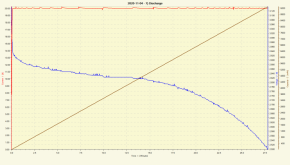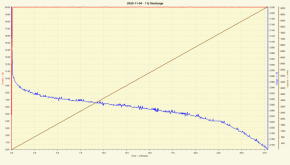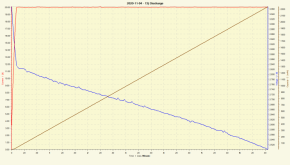Hypothesis: Paralleling cells at rest does almost nothing beneficial. While voltages may be equalized, their states of charge remain dramatically far apart.
I decided to do an experiment.
Take two CALB 40Ah LFP cells.
I am on #6 with X currently at about 2 hours.
There are some limitations. These cells have been abused in a Gen2 Prius aftermarket plug-in hybrid kit with no cooling and have been discharged to 0.6V each. My equipment is not ideal for these lower voltage cells, so I'm getting a bit of voltage drop. The charge should be pretty good with a 2A termination, but the discharge is terminated somewhat prematurely. There's not much left between 2.7 and 2.5.
Step 1, 20A charge to 3.65V, taper to 2A, terminate:
Cell #1:
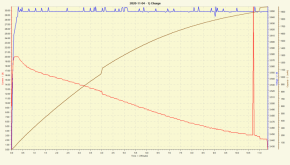
About 1.9Ah in.
Cell 2:
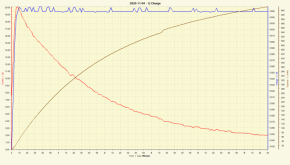
About 0.65Ah in
Step 2: 20A to 2.5V:
Cell 1:
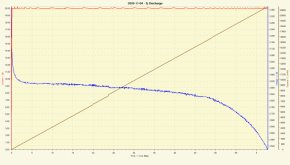
21.3Ah
Cell 2:
Had some "Oops" where the unit turned off early, so you have to imagine these are continuous:

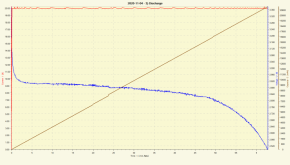
23.3Ah
Step 3: (same charge as step 1, cell 2 only)
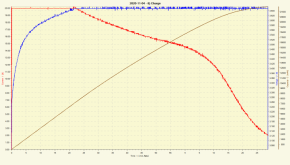
22.4Ah in
Step 4:
Cell 1 (sit for about 16 hours):

Bounced to 3.124
Cell 2:
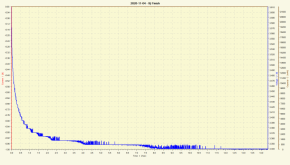
Ended at 3.34
I put them in parallel:
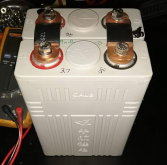
Any suggestions on duration? I reserve the right to ignore you, but I'm shooting for about 24 hours.
I decided to do an experiment.
Take two CALB 40Ah LFP cells.
- Fully charge to 3.65V
- Fully discharge to 2.5V
- Charge ONE to 3.65V
- Let them sit for 12+ hours
- Put them in parallel
- Let them sit in parallel for X hours
- Discharge each to measure how much charge transferred.
I am on #6 with X currently at about 2 hours.
There are some limitations. These cells have been abused in a Gen2 Prius aftermarket plug-in hybrid kit with no cooling and have been discharged to 0.6V each. My equipment is not ideal for these lower voltage cells, so I'm getting a bit of voltage drop. The charge should be pretty good with a 2A termination, but the discharge is terminated somewhat prematurely. There's not much left between 2.7 and 2.5.
Step 1, 20A charge to 3.65V, taper to 2A, terminate:
Cell #1:

About 1.9Ah in.
Cell 2:

About 0.65Ah in
Step 2: 20A to 2.5V:
Cell 1:

21.3Ah
Cell 2:
Had some "Oops" where the unit turned off early, so you have to imagine these are continuous:


23.3Ah
Step 3: (same charge as step 1, cell 2 only)

22.4Ah in
Step 4:
Cell 1 (sit for about 16 hours):

Bounced to 3.124
Cell 2:

Ended at 3.34
I put them in parallel:

Any suggestions on duration? I reserve the right to ignore you, but I'm shooting for about 24 hours.



